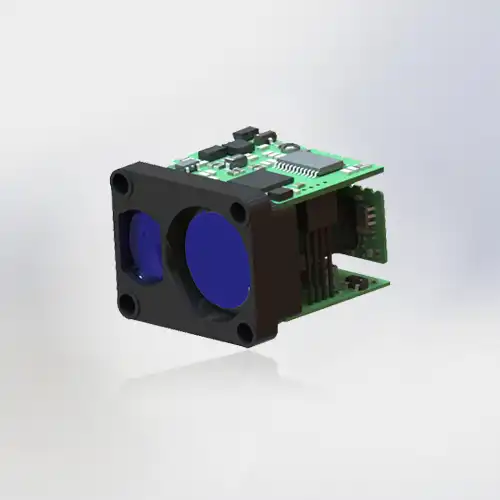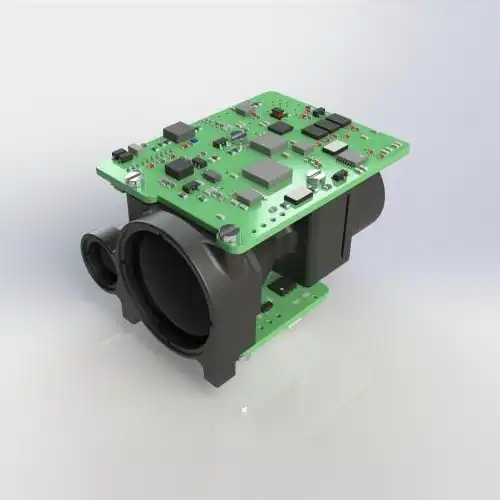What are the components of a laser sensor?
Laser sensors play a crucial role in various applications, providing precise measurements and data collection in real time. Their accuracy is essential in fields such as construction, manufacturing, and surveying, where even minor errors can lead to significant problems. Laser sensors can detect distances and dimensions with high precision, ensuring proper alignment and leveling. Additionally, they enhance safety by minimizing human error and improving the efficiency of processes. By automating measurement tasks, laser sensors save time and resources, allowing professionals to focus on other critical aspects of their projects. In this article, I'll break down the essential parts of a laser sensor, focusing on Laser Rangefinders, their importance, and how they work.
B-Side Customer Concerns
Accuracy and Precision
B-side customer concerns frequently center on the accuracy and precision of products, especially in applications requiring reliable measurements. Accuracy refers to how closely a measurement aligns with the true or expected value, which is crucial for applications where even slight deviations can lead to significant errors. Customers seek sensors that can consistently deliver accurate results to enhance the quality of their operations.
Precision, on the other hand, indicates the consistency of repeated measurements under the same conditions. High precision ensures that the results are reproducible, providing confidence in the data collected over time. Customers often prioritize both factors when selecting sensors, as they directly impact performance, decision-making, and overall satisfaction. Addressing these concerns is essential for manufacturers aiming to build trust and reliability with their clients. Hainan Yiyang Technology Co., Ltd. provides Laser Rangefinders that undergo rigorous testing to guarantee high accuracy and precision, ensuring reliable measurements every time.
Durability and Environmental Resistance
B-side customer concerns significantly revolve around the durability and environmental resistance of products, particularly in demanding applications. Durability refers to a product’s ability to withstand mechanical stresses, impacts, and wear over time, ensuring long-term functionality without frequent repairs or replacements. Customers value sensors that are robust and can maintain performance even in harsh conditions.
Environmental resistance is equally important, encompassing a sensor's ability to function reliably in extreme temperatures, humidity, dust, and exposure to corrosive substances. Customers often seek products that meet specific industry standards for environmental protection, such as IP ratings. By prioritizing these factors, manufacturers can enhance customer confidence, ensuring that their sensors will perform consistently in various operational environments.
Ease of Integration and Use
B-side customer concerns often focus on the ease of integration and use of a product, particularly in complex systems. Ease of integration refers to how seamlessly a laser sensor can be incorporated into existing infrastructure, including compatibility with other devices and software platforms. Customers prefer sensors that come with clear documentation, user-friendly interfaces, and straightforward installation processes to minimize downtime and disruption.

Additionally, ease of use is vital for ensuring that operators can effectively manage and operate the sensor without extensive training. Intuitive controls, straightforward data interpretation, and accessible technical support contribute to a positive user experience. Addressing these concerns helps enhance operational efficiency and customer satisfaction. Hainan Yiyang Technology Co., Ltd. designs its Laser Rangefinders with the end-user in mind, providing detailed manuals and support to ensure seamless integration and operation.
Cost-Effectiveness
B-side customer concerns often focus on cost-effectiveness, which is crucial for maintaining budget constraints while ensuring quality performance. Cost-effectiveness refers to the balance between the initial investment and the long-term benefits a product provides. Customers are keen on products that not only fit within their financial plans but also deliver exceptional value over time.
This includes considerations such as energy efficiency, maintenance costs, and the lifespan of the product. A sensor that requires minimal upkeep and has a longer operational life can significantly reduce overall expenses. Customers also appreciate transparent pricing and clear justifications for the cost, which help them make informed decisions. By addressing cost-effectiveness, manufacturers can attract more customers looking for reliable and economical solutions.
FAQ
Q: What is a laser sensor?
A: A laser sensor is a device that uses laser technology to measure distances, detect objects, and provide accurate data for various applications. It typically consists of components such as a laser diode, photodetector, and signal processing unit.
Q: How does a laser sensor work?
A: A laser sensor emits a laser beam towards a target. The beam is reflected back to the sensor, and the time it takes for the reflection to return is measured. This time is then used to calculate the distance to the target with high precision.
Q: What are the main components of a laser sensor?
A: The main components include the laser diode (which emits the laser beam), the photodetector (which detects the reflected beam), the signal processing unit (which processes the detected signal), and the power supply (which provides the necessary energy for the sensor).
Q: Why are Laser Rangefinders important in industrial applications?
A: Laser Rangefinders provide accurate and reliable distance measurements, which are crucial in applications such as construction, manufacturing, and automation. They help ensure precision, improve efficiency, and reduce the risk of errors.
Q: How do I maintain a laser sensor?
A: To maintain a laser sensor, keep the lens clean and free from dust or debris, as this can affect accuracy. Regularly check the calibration of the device and store it in a protective case when not in use to prevent damage.
Q: Can laser sensors work outdoors?
A: Yes, many laser sensors are designed for outdoor use. However, it's essential to choose a model with suitable visibility range and resistance to environmental factors like sunlight, rain, and dust to ensure accurate performance in outdoor conditions.
Conclusion
In conclusion, understanding the components and functions of a laser sensor is essential for selecting the right Rangefinder for your needs. Accuracy, durability, ease of integration, and cost-effectiveness are critical factors to consider. By choosing a reliable manufacturer like Hainan Yiyang Technology Co., Ltd., you can ensure that you are getting a high-quality, dependable product.
Hainan Yiyang Technology Co., Ltd. is a professional Laser Rangefinders manufacturer and supplier, with a large inventory, complete certificates, fast delivery, and strict packaging. We support testing, OEM, and ODM. If you are choosing your own Rangefinders, please contact us at evelyn@eyoungtec.com.
References
1. Bosch. "Laser Distance Measurer." Bosch Professional. https://www.bosch-professional.com/
2. Leica Geosystems. "Leica DISTO™ - Laser Distance Meters." Leica Geosystems. https://leica-geosystems.com/
3. Fluke Corporation. "Laser Distance Meters." Fluke Corporation. https://www.fluke.com/
4. Keyence Corporation. "Laser Displacement Sensors." Keyence Corporation. https://www.keyence.com/







